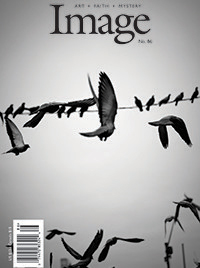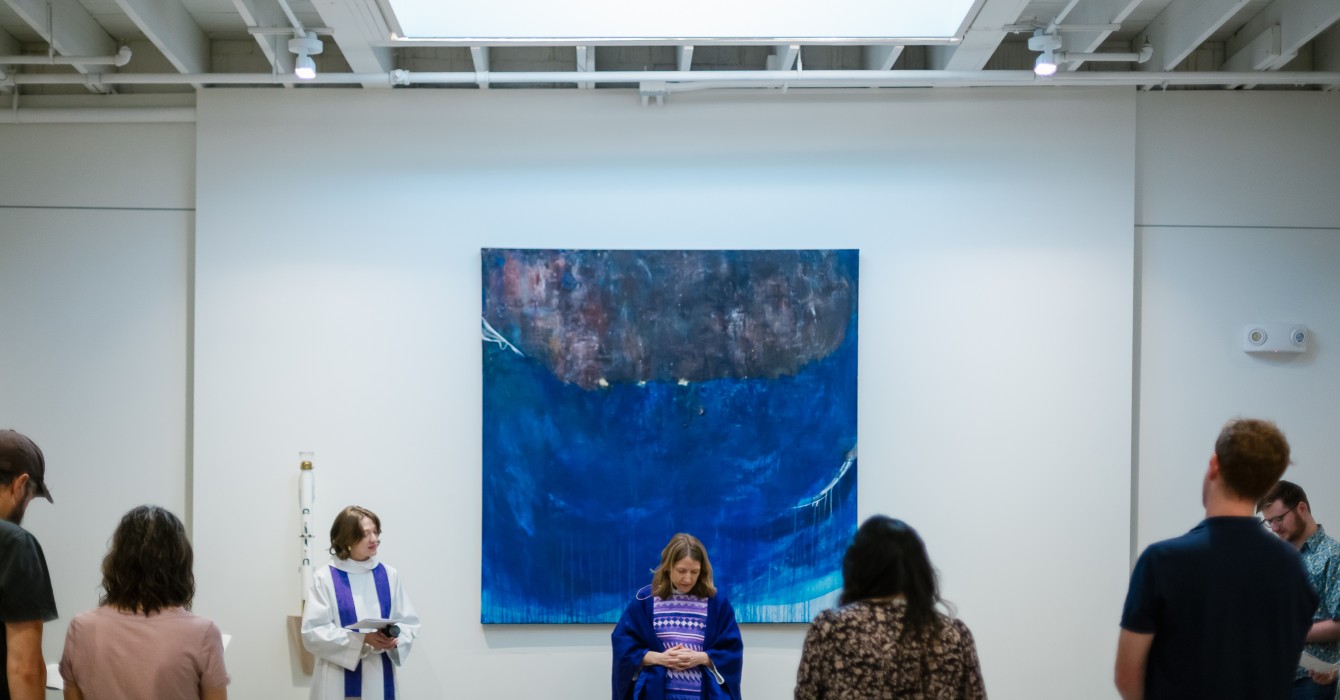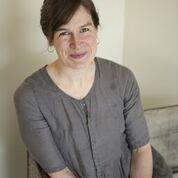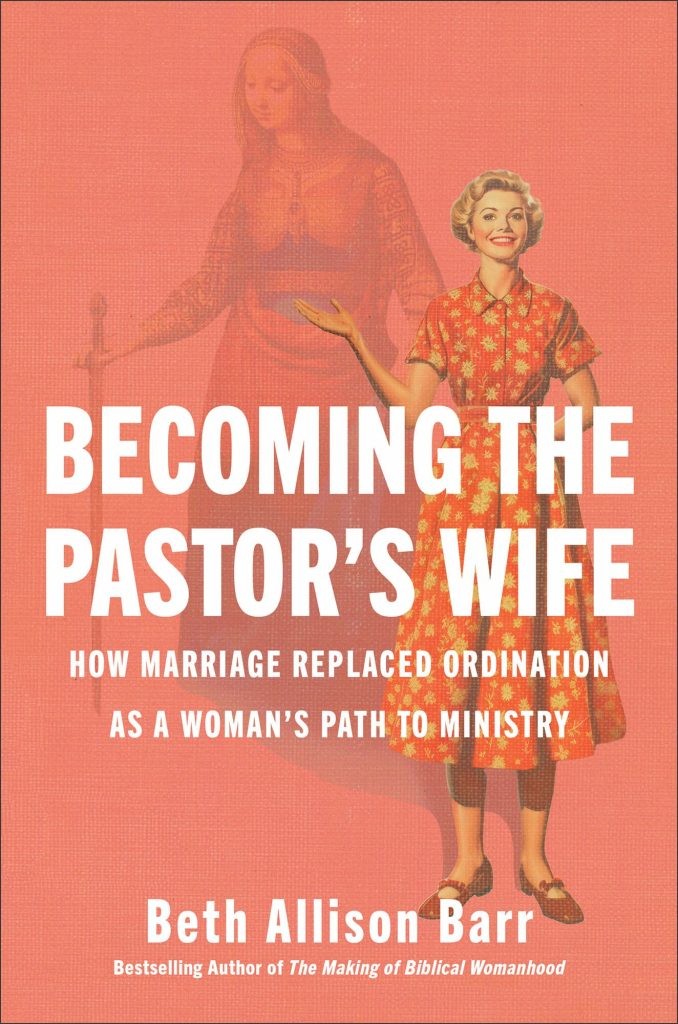Update: Image Journal's board of directors terminated Gregory Wolfe's employment in April 2018.
Does religion have a culture problem, or does culture have a religion problem? Has the Christian community sacrificed beauty in search of truth and virtue?
Gregory Wolfe, the Seattle-based founder of the arts and literature journal Image, has been grappling with these questions for decades, walking a fine line between provocation and conciliation, originality and tradition.
“That tension between what Christians would call a fallen world and the ideal itself is a form of beauty,” Wolfe said.
In addition to editing the journal, Wolfe is a teacher and author. Among his books are "Beauty Will Save the World," "Malcolm Muggeridge: A Biography," "Sacred Passion: The Art of William Schickel" and his latest book of collected essays, "The Operation of Grace: Further Essays on Art, Faith and Mystery."
Wolfe, who is also the founder of the master of fine arts program in creative writing at Seattle Pacific University, spoke with Faith & Leadership to share his thoughts on art, faith and the value of leadership. The following is an edited transcript.
 Q: You started the journal Image in 1989, near the beginning of the culture wars. Were you tempted to use the journal to enter into those debates?
Q: You started the journal Image in 1989, near the beginning of the culture wars. Were you tempted to use the journal to enter into those debates?
Those debates were sterile at best and truly destructive at worst, for both church and society. The impulse of the journal’s founding was really to find a different way.
Our editors were very much aware that in many Christian circles, the preferred method of engaging the world was primarily in the areas of apologetics and politics. The models were to get votes and win souls. Both models overemphasize rationality and a kind of dry or abstract affirmation of doctrine.
We believed that this was an imbalance. Imagination was being slighted. For centuries within Christian circles, it’s been tricky to promote things like beauty when truth and goodness seem to get all the good PR. Beauty seems to be untrustworthy, or potentially even dangerous. In the Christian tradition, we have emphasized faith and reason to the exclusion of imagination.
Without a balance, we tend toward abstraction and legalism. We tend to see everything in terms of warfare, and we treat religion as a set of propositions rather than as an encounter with a presence.
Q: Do you think religious art or art of any kind has to be beautiful?
A lot of people think that beauty really means prettiness or attractiveness or the ideal. This goes way back. The Greeks struggled with it. On the one hand, they loved the ideal form, the supermodel.
On the other hand, there was Greek tragedy. There was this sense that beauty, in a very strange way, can coexist with brokenness. That Oedipus -- with his eyes gouged out and blood and gore dripping down his face -- was in some mysterious way an image of beauty, an image of dignity in distress.
That tension between what Christians would call a fallen world and the ideal itself is a form of beauty. Tragedy is not only part of the Greek tradition; it’s part of the Christian tradition, too.
To understand that the cross ties into all this is very important. I really don’t feel that the problem is with beauty; I think it’s with the ways that we’ve historically come to define what beauty is.
Q: The artwork in Image is almost exclusively contemporary. How do you decide what art and which artists fit with the journal?
We joke around the office that dead people need not apply. And it’s not because we slight the tradition. We are very much traditionalists. But that particular choice was made precisely during the era of the culture wars.
I sometimes think that anger is underestimated as a motive for true leadership. Back when we were hammering out plans for this journal, one thing that angered us was the strange confluence of agreement between two vastly different groups of people.
On the one hand, there were millions of believers in America who seemed convinced that modern art was always capitalized -- “Modern Art” -- and that it was monolithic and terrible. In other words, the world itself, and modern art with it, had become so tainted that the best we could do would be to circle the wagons around an older cultural heritage.
On the other hand, sophisticated secular intellectuals and cultural gatekeepers welcomed this. Why? Because Freud and others had made it abundantly clear that religion was escapism, so there could be no way to make new, great art out of an engagement with faith. Art is fundamentally about the real, and if you’re running away from reality, you can’t generate great art.
Our question at Image was, how could millions of religious believers and hundreds if not thousands of cultural-intellectual gatekeepers agree that this was not possible? So our choice to focus on the contemporary was deliberate.
Q: So the contemporary focus is deliberate, but what about the often nonreligious focus? How do you decide what’s appropriate for the magazine?
Not all short stories have to be about troubled youth ministers or alcoholic priests. Not every poem has to be about Lot’s wife. There have been hundreds of thousands of poems written about Lot’s wife, so we can take a little holiday from those for a century or two.
So what’s the criterion after that? I think there’s an element of mystery to it, a case-by-case approach. You look for resonances, you look for some sense of moral or spiritual tradition as having a kind of resonance in the world.
We’re open not only to contributors who are happily ensconced in a creedal and institutional context but also to those who are angry, those who are baffled, those who are puzzled, those who are, like Jacob, wrestling with the angel.
I call these people “grapplers,” because I think the word “seeker” is, frankly, too lame. You can be seeking for your brand of coffee on the shelf. But to grapple with something, to really not be willing to let it go, even if you’re hurt and confused and upset -- that’s something. And I love that the grapplers mix in our pages with those who are more comfortable with faith and religious institutions.
The mixture of such quiet resonances between these pieces in any given issue is one of the great joys of the journal.
Q: How does being Catholic influence you as a writer and editor?
Catholics believe that the world, while fallen, still isn’t so broken that it doesn’t provide us with good analogies to understand God. We have a sacramental view that’s willing to look for those resonances without jumping immediately to the doctrinal or intellectual or philosophical divides. There’s a kind of predilection toward seeking unity, seeking a kind of fundamental human commonality.
No good-minded Catholic would say that we can figure all this stuff out without revelation. But the incarnation reveals to us that we can look at the world and discover things, and I believe that’s important.
Then again, I was not raised Catholic. I became Catholic while in graduate school, in part because of art. I was reading these great Catholic novelists of the 20th century -- writers like [Graham] Greene, [Evelyn] Waugh, [Flannery] O’Connor, [Walker] Percy, [Georges] Bernanos and Muriel Spark. And I was exposed to painters like Georges Rouault and others. Their sacramentality as artists won me over.
Q: Do you have your own spiritual practices that are related to art?
I’ve been blessed in my vocation, because I really am able to embody that old Benedictine motto of ora et labora -- to pray and to work. The process of reading all this rich material and then finding what we could publish and share with the world gives me an opportunity for a contemplative search for grace.
For me, slogging through the slush pile means potentially being surprised by joy and grace and even pain, but the kind of pain that is a tragic awareness of the beauty of broken things.
The other part of my life, of course, is nurturing the capacity of people to go and do these things. I’m a teacher, an educator, the founder of an MFA program in these areas. So I can understand how craft and artistic discipline are similar to ancient spiritual practices. When I’m trying to help a writer write more honestly and more poignantly, I’m really in some sense looking to enable her to tell her story, to expose the moment of grace and the epiphany.
I get these two great pathways -- content and form, or vision and craft -- both of which are deeply meditative. Sometimes I feel guilty that I try to make that stand in the place of actual prayer, and I probably have something to answer for there. On the other hand, at the end of the day, I really do believe that those are true forms of spiritual practice.
Q: Do you see yourself as an institution builder?
I do. I think building institutions is a lot like marriage. You don’t really foresee everything that’s involved up front, because you’re too in love with the immediate moment. I just loved literary publications and quarterlies so much that I wanted to make one. But I woke up the next morning realizing I had to figure out a way to keep it going.
I think that you’re the best institution builder when you don’t set out to build institutions but rather to pursue what you love. But I had this shock pretty quickly -- the morning after, so to speak -- realizing what life would have to be like. I decided that if I loved this enough, I had to be serious about the rest, because I wouldn’t have the one without the other.
So I received a whole education in what founding sustained institutions is all about. It’s a rare skill, but I think it’s very important in the larger economy of work and ministry for people who have a passion for “a long obedience in the same direction,” to quote the title of a Eugene Peterson book.
Q: What was the hardest thing for you to learn in terms of transferring a passion into an ability?
One of the key moments for me was learning when to step aside, and learning that, for all of the inestimable value of the fanatical founder, sometimes the successful completion of an activity requires a community rather than just an individual.
My biggest problem about getting out of the way was that I framed it to myself as if I was being virtuous, as if it was an act of humility.
For instance, I took forever to get a real board of directors going. I kept saying to myself, “Well, how can I ask these busy, important people to come hundreds of miles and spend hundreds of dollars on plane tickets and hotels just to help me with this project? Who am I to ask that much of people?”
Eventually, people started to say to me, “Greg, so it’s really about you! You’re saying you don’t have the right to ask this of people, as if it depends on your will. What if these people want to come because they believe in what the total package is about?” It took me a long time to understand that my pride was parading as a false humility.
Q: For someone who isn’t already inclined to be engaged in the arts, what writer, musician or visual artist would you recommend?
I think there are very few people who don’t have any art in their lives, even if they’re just people who have a poster of a sunrise with a Bible verse on it. So I think one simple answer may be a big cliché: just start where you are. What is it that you like? Is there any more of it out there, in museums or concert halls or what have you? Follow the pleasure that you already have.
The funny thing about beauty is that it has this pleasurable element, which has led a lot of people to suspect it. Because, of course, pleasure is always about guilt, right?
So follow your pleasure, and see where it leads you. There’s always a tradition there. Learning about that tradition, learning how even the most contemporary thing has deep roots, can become a great source of pleasure and reward to people.
Blake had this wonderful image of the golden string. It’s sort of like a loose thread in anyone’s experience. If you can find that thread, that golden string, and tug on it, it’s going to lead you somewhere. And I think there are many resources out there for people who are hungry to see whether or not art and imagination and beauty can enrich their lives and make their faith more concrete, more human, less abstract.
Fundamentally, for me, that’s the gift that art gives to theology and faith.













